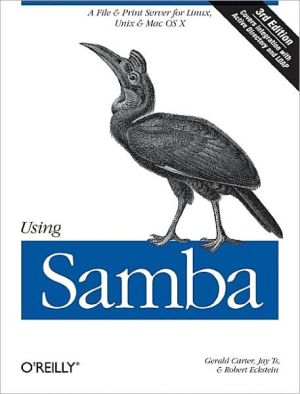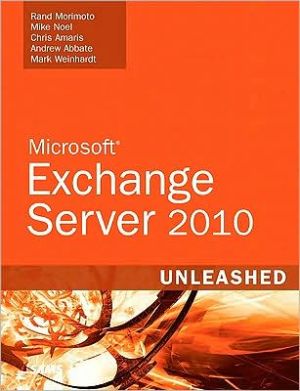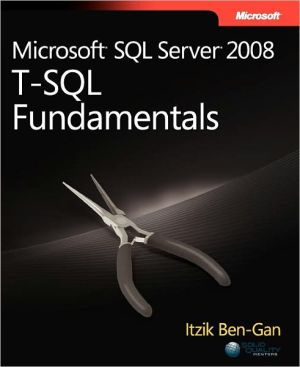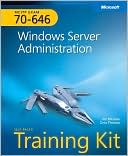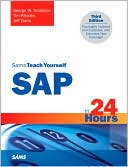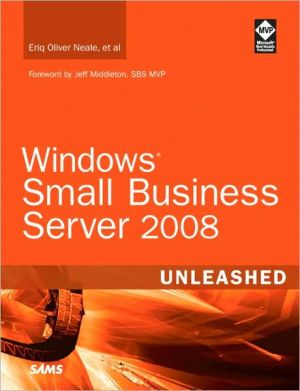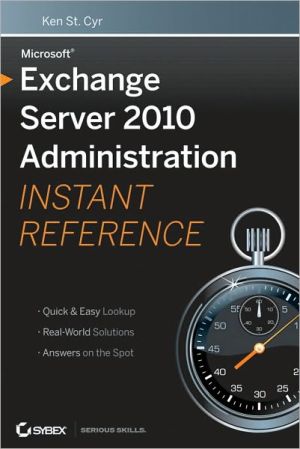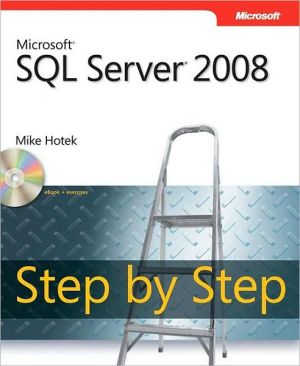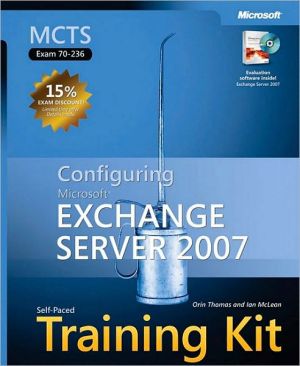Using Samba
Samba is cross-platform triumph: it turns a Unix of Linux system into a file and print server for Microsoft Windows network clients. Now you can let users store their files (and even important executables) in a single place for easy sharing and backup, protected by Unix or NT security mechanisms, and still offer such transparent access that PC users don't even realize they're going to another system. The magic behind Samba is that it recognizes and speaks the SMB protocol developed by...
Search in google:
Samba turns a UNIX or Linux system into a file and print server for Microsoft Windows network clients. This book is a complete guide to Samba administration: basic configuration, security, logging, troubleshooting, and full coverage of all options. Whether you're playing on one note or a full three-octave range, this book will give you an efficient and secure server. Booknews A book/CD-ROM guide to Samba administration, with chapters on installation, configuration, and optimization, and material on recent additions such as integration with Windows NT domains and the SWAT graphic configuration tool. Goes through the PC side of installation in detail, and gives examples for both Windows 95/98 and Windows NT, as well as examples for common Unix operating systems such as Linux 2.0 and Solaris 2.6. For Unix administrators in a PC environment. The CD-ROM is a complete mirror of the Samba FTP site, with sources, ready-to-install binaries, documentations, and related utilities. Annotation c. Book News, Inc., Portland, OR (booknews.com)
\ \ 1. Learning the Samba\ If you are a typical system administrator, then you know what it means to be swamped with work. Your daily routine is filled with endless hardware incompatibility issues, system outages, data backup problems, and a steady stream of angry users. So adding another program to the mix of tools that you have to maintain may sound a bit perplexing. However, if you're determined to reduce the complexity of your work environment, as well as the workload of keeping it running smoothly, Samba may be the tool you've been waiting for.\ A case in point: one of the authors of this book used to look after 70 Unix developers sharing 5 Unix servers. His neighbor administered 20 Windows 3.1 users and 5 OS/2 and Windows NT servers. To put it mildly, the Windows 3.1 administrator was swamped. When he finally left -- and the domain controller melted -- Samba was brought to the rescue. Our author quickly replaced the Windows NT and OS/2 servers with Samba running on a Unix server, and eventually bought PCs for most of the company developers. However, he did the latter without hiring a new PC administrator; the administrator now manages one centralized Unix application instead of fifty distributed PCs.\ If you know you're facing a problem with your network and you're sure there is a better way, we encourage you to start reading this book. Or, if you've heard about Samba and you want to see what it can do for you, this is also the place to start. We'll get you started on the path to understanding Samba and its potential. Before long, you can provide Unix services to all your Windows machines -- all without spending tons of extra time or money. Sound enticing? Great, then let's get started.\ What is Samba?\ Samba is a suite of Unix applications that speak the SMB (Server Message Block) protocol. Many operating systems, including Windows and OS/2, use SMB to perform client-server networking. By supporting this protocol, Samba allows Unix servers to get in on the action, communicating with the same networking protocol as Microsoft Windows products. Thus, a Samba-enabled Unix machine can masquerade as a server on your Microsoft network and offer the following services: \ \ Share one or more filesystems\ Share printers installed on both the server and its clients\ Assist clients with Network Neighborhood browsing\ Authenticate clients logging onto a Windows domain\ Provide or assist with WINS name server resolution\ \ Samba is the brainchild of Andrew Tridgell, who currently heads the Samba development team from his home of Canberra, Australia. The project was born in 1991 when Andrew created a fileserver program for his local network that supported an odd DEC protocol from Digital Pathworks. Although he didn't know it at the time, that protocol later turned out to be SMB. A few years later, he expanded upon his custom-made SMB server and began distributing it as a product on the Internet under the name SMB Server. However, Andrew couldn't keep that name -- it already belonged to another company's product -- so he tried the following Unix renaming approach:\ grep -i 's.*m.*b' /usr/dict/words\ And the response was:\ salmonberry samba sawtimber scramble\ Thus, the name "Samba" was born.\ Which is a good thing, because our marketing people highly doubt you would have picked up a book called "Using Salmonberry"!\ Today, the Samba suite revolves around a pair of Unix daemons that provide shared resources -- or shares -- to SMB clients on the network. (Shares are sometimes called services as well.) These daemons are:\ smbd\ A daemon that allows file and printer sharing on an SMB network and provides authentication and authorization for SMB clients.\ nmbd\ A daemon that looks after the Windows Internet Name Service (WINS), and assists with browsing.\ Samba is currently maintained and extended by a group of volunteers under the active supervision of Andrew Tridgell. Like the Linux operating system, Samba is considered Open Source software (OSS) by its authors, and is distributed under the GNU General Public License (GPL). Since its inception, development of Samba has been sponsored in part by the Australian National University, where Andrew Tridgell earned his Ph.D. [1] In addition, some development has been sponsored by independent vendors such as Whistle and SGI. It is a true testament to Samba that both commercial and non-commercial entities are prepared to spend money to support an Open Source effort.\ At the time of this printing, Andrew had completed his Ph.D. work and had joined San Francisco-based LinuxCare.\ Microsoft has also contributed materially by putting forward its definition of SMB and the Internet-savvy Common Internet File System (CIFS), as a public Request for Comments (RFC), a standards document. The CIFS protocol is Microsoft's renaming of future versions of the SMB protocol that will be used in Windows products -- the two terms can be used interchangeably in this book. Hence, you will often see the protocol written as "SMB/CIFS."\ 1.2 What Can Samba Do For Me?\ As explained earlier, Samba can help Windows and Unix machines coexist in the same network. However, there are some specific reasons why you might want to set up a Samba server on your network: \ \ You don't want to pay for - or can't afford - a full-fledged Windows NT server, yet you still need the functionality that one provides.\ You want to provide a common area for data or user directories in order to transition from a Windows server to a Unix one, or vice versa.\ You want to be able to share printers across both Windows and Unix workstations.\ You want to be able to access NT files from a Unix server.\ \ Let's take a quick tour of Samba in action. Assume that we have the following basic network configuration: a Samba-enabled Unix machine, to which we will assign the name hydra, and a pair of Windows clients, to which we will assign the names phoenix and chimaera, all connected via a local area network (LAN). Let's also assume that hydra also has a local inkjet printer connected to it, lp, and a disk share named network - both of which it can offer to the other two machines. A graphic of this network is shown in Figure 1.1.\ In this network, each of the computers listed share the same workgroup. A workgroup is simply a group nametag that identifies an arbitrary collection of computers and their resources on an SMB network. There can be several workgroups on the network at any time, but for our basic network example, we'll have only one: the SIMPLE workgroup....
Preface 1. Learning the Samba What is Samba? What Can Samba Do For Me? Getting Familiar with a SMB/CIFS Network Microsoft Implementations An Overview of the Samba Distribution How Can I Get Samba? What's New in Samba 2.0? And That's Not All... 2. Installing Samba on a Unix System Downloading the Samba Distribution Configuring Samba Compiling and Installing Samba A Basic Samba Configuration File Starting the Samba Daemons Testing the Samba Daemons 3. Configuring Windows Clients Setting Up Windows 95/98 Computers Setting Up Windows NT 4.0 Computers An Introduction to SMB/CIFS 4. Disk Shares Learning the Samba Configuration File Special Sections Configuration File Options Server Configuration Disk Share Configuration Networking Options with Samba Virtual Servers Logging Configuration Options 5. Browsing and Advanced Disk Shares Browsing Filesystem Differences File Permissions and Attributes on MS-DOS and Unix NameMangling and Case Locks and Oplocks 6. Users, Security, and Domains Users and Groups Controlling Access to Shares Authentication Security Passwords Windows Domains Logon Scripts 7. Printing and Name Resolution Sending Print Jobs to Samba Printing to Windows Client Printers Name Resolution with Samba 8. Additional Samba Information Supporting Programmers Magic Scripts Internationalization WinPopup Messages Recently Added Options Miscellaneous Options Backups with smbtar 9. Troubleshooting Samba The Tool Bag The Fault Tree Extra Resources A. Configuring Samba with SSL B. Samba Performance Tuning C. Samba Configuration Option Quick Reference D. Summary of Samba Daemons and Commands E. Downloading Samba with CVS F. Sample Configuration File
\ BooknewsA book/CD-ROM guide to Samba administration, with chapters on installation, configuration, and optimization, and material on recent additions such as integration with Windows NT domains and the SWAT graphic configuration tool. Goes through the PC side of installation in detail, and gives examples for both Windows 95/98 and Windows NT, as well as examples for common Unix operating systems such as Linux 2.0 and Solaris 2.6. For Unix administrators in a PC environment. The CD-ROM is a complete mirror of the Samba FTP site, with sources, ready-to-install binaries, documentations, and related utilities. Annotation c. Book News, Inc., Portland, OR (booknews.com)\ \
